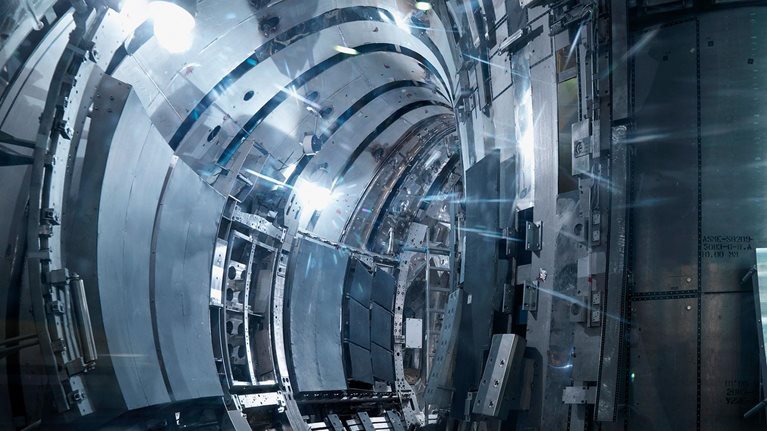Hydrogen could play a central role in helping the world reach net-zero emissions by 2050. As a complement to other technologies, including renewable power and biofuels, hydrogen has the potential to decarbonize industries including steel, petrochemicals, fertilizers, heavy-duty mobility (on and off-road), maritime shipping, and aviation, as well as to support flexible power generation (among other applications). In 2050, hydrogen could contribute more than 20 percent of annual global emissions reductions.
Hydrogen’s potential role in the broader energy transition is explored in a series of industry reports coauthored by McKinsey and the Hydrogen Council—a global, CEO-led initiative with members from more than 140 companies. The reports explore, for example, how demand for hydrogen could reshape current power, gas, chemicals, and fuel markets; the need for scaling hydrogen production, particularly clean hydrogen (which is made with renewables or with measures to lower emissions); and what must happen in the coming decade to reach net-zero targets.
The momentum behind hydrogen has accelerated in the past year, as described in Hydrogen Insights 2022,1 a recently published perspective on the state of the hydrogen industry. Both investment and project development have ramped up. However, a funding gap remains.
The following five charts show how hydrogen could play a key role in a low-carbon future.
Part of the net-zero equation
By 2050, clean hydrogen could help abate seven gigatons of CO2 emissions annually, which is about 20 percent of human-driven emissions if the world remains on its current global-warming trajectory.1 Complementing other technologies, such as renewables and biofuels, hydrogen has the potential to decarbonize a variety of sectors, for example: industry (steelmaking, ammonia synthesis for fertilizer production); long-range ground mobility (as a fuel for heavy-duty trucks); maritime shipping and aviation (to produce synthetic fuels for vessels); and building heating. Hydrogen can also be used for flexible, long-term storage for power grids. Industry and transportation account for most of hydrogen’s abatement potential, which has a cumulative emissions reductions upside of 80 gigatons of CO2 through 2050.

Investment is growing
More than 680 large-scale hydrogen projects have been announced globally,1 amounting to $240 billion in direct investments. The projects include gigascale production, large-scale industrial usage, transport, and infrastructure. In Europe, which accounts for 314 of announced projects, hydrogen is expected to play a significant role in meeting decarbonization targets, with usage across industrial applications, transportation, and power generation. Within Asia, China accounts for roughly half the total announcements. Among announced projects in China, most focus on hydrogen use in transportation. In North America, hydrogen production should help boost the region’s domestic supplies of low-carbon energy across multiple applications.
Additionally, hydrogen export hubs have been announced in Africa, Latin America, the Middle East, and Oceania. These hubs could feed growing demand in Asia and Europe, for example.

Cleaner future
Today, most hydrogen is produced with fossil fuels, also known as grey hydrogen. Fulfilling hydrogen’s potential as a decarbonization tool will require a significant scale-up of clean hydrogen, which can be produced with renewables (often described as green hydrogen) or with fossil fuels combined with measures to significantly lower emissions, such as carbon capture, utilization, and storage (often called blue hydrogen). Demand for clean hydrogen could grow to approximately 660 million metric tons annually by 2050. Total planned production for green and blue hydrogen through 2030 has reached more than 26 million metric tons annually—a figure that has roughly quadrupled since 2020. The production costs of clean hydrogen are expected to rapidly decline over the next decade. At a production cost of approximately $2 per kilogram, clean hydrogen could become cost competitive in many applications.

Greening steel
Steel is one of the world’s highest CO2-emitting industries. Largely due to the use of coking coal in the production process, steel accounts for about 8 percent of global annual emissions. While it will require initial investment to make the transition, hydrogen-based steelmaking has the potential to greatly reduce the industry’s footprint: steel is expected to generate about 8 percent of clean-hydrogen demand in 2030 but could account for nearly 20 percent of emissions avoided via hydrogen that year.1 More than 50 steelmaking projects with green-hydrogen ambitions have been announced worldwide, with Europe as a center of early growth.

Funding gap
Despite hydrogen’s momentum, a significant investment gap remains for it to fully contribute to decarbonization. Achieving a pathway to net zero will require additional direct investments of $460 billion by 20301—closing the gap between the $240 billion of announced projects and $700 billion in required investments. The investment gap breaks down into three categories:
- Production. Clean-hydrogen production has the highest amount of announced investments; however, it’s also the segment with the biggest investment requirements. The current investment gap is roughly $150 billion through 2030.
- Transmission, distribution, and storage. Investments in this part of the value chain are critical to enabling access to cost-competitive hydrogen supplies, for example, connecting the regions with the lowest production costs to demand hubs, developing refueling infrastructure for vehicles, or building pipelines to supply industrial plants. An investment gap of more than $165 billion remains.
- End-use applications. Meeting projected demand in hydrogen’s various end-use applications, including steel production and transportation, will require additional investments of $145 billion, with the largest absolute gap in mobility. New industry applications such as steel will require significant investments—about $35 billion—for outlays like new plants. However, steel is also one of the most advanced segments among announced investments, with about half of required investments announced.

How leaders could help maximize hydrogen’s potential in the net-zero economy
For hydrogen to become a pivotal player in the energy transition, scale-up over the next decade is critical. Policy makers and business leaders can consider actions in three key areas:
- Creating demand. Companies could play a role by pursuing industry-wide transition commitments while policy makers could create incentives—for instance, by introducing direct support mechanisms and mandating quotas or targets.
- Developing infrastructure. Up-front investments are required to develop large-scale infrastructure that enables distribution, such as pipelines and refueling infrastructure.
- Scaling up production. Hydrogen demand will reach mass-market adoption only when low-cost clean-hydrogen supply is available. This will require a scale-up in electrolysis capacity and accompanying renewable-energy capacity, as well as the build-out of carbon capture, utilization, and storage infrastructure. The sooner these investments in gigascale production are made, the earlier hydrogen will reach cost competitiveness.


